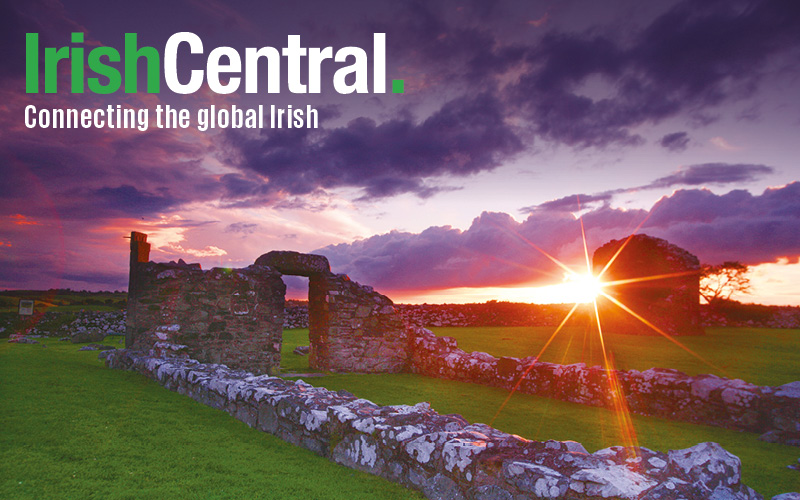What’s in a flag, you ask? It seems that flags mean everything … and nothing.
While scrolling through my Twitter feed recently, a post caught my eye. Donal Fallon (@fallon_donal), an excellent and lively social historian specializing in all things Dublin (check out his Three Castles Burning podcast), informed the Twitter community that his neighbour had complained to their management company about his hanging of the Irish tri-colour outside his home.
Read more: Do you know the story behind the Irish flag?
For Donal, and indeed many others in Ireland and elsewhere, the hanging of one’s national flag has become a mark of respect and admiration for national efforts against our shared enemy: COVID-19. It’s a symbol of collective hope and self-sacrifice.
In a recent ministerial address to the nation, Taoiseach (Prime Minister) Leo Varadkar drew on the words of Ireland’s great poet, Seamus Heaney: "We were all the more together for having had to turn and walk away."
Walking away from family and friends in a time of need seems counterintuitive. But the reality is that our physical absence is the greatest gift that we can give our loved ones at present. In place of physical contact, symbolic gestures of positivity and optimism have manifested themselves in unusual and creative ways: teddy bear hunts in windows to lift the spirits of passing children; people standing outside their homes and on their balconies pausing to applaud the heroic efforts of frontline staff; and the national flag flying outside of people’s homes.
However, while these gestures seem fairly innocuous, for others, flying the Irish flag represents something more insidious.
Read More: Irish Olympian forced to compete for Britain smuggled in an Irish flag
The Irish national flag, or ‘tri-colour,’ is comprised of three colours: green, representing Irish nationalism; orange, Ireland’s Protestant community; and white, reflecting the hope for lasting peace between the two. It reminds us of the peace we’ve achieved and the lasting peace we hope to experience in the future.
While all this seems noble and fairly well defined, symbols are inherently arbitrary. They are often physical representations of abstract ideas. Their imbued significance resonates with some while lacking any and all meaning for others. A series of coloured parallel lines might be recognised as a national flag or as an abstract production by Gerhard Richter. Remember, we are the meaning makers.
Flags are particularly powerful symbols. In his book 'Worth Dying For: The Power and Politics of Flags', Tim Marshall reminds us that "We wave flags, we burn them, they fly outside parliaments and palaces, homes and showrooms. They represent the politics of high power and the power of the mob. … This is the emotion-charged emblem that is a flag. It has the power to evoke and embody sentiments so strong that sometimes people will even follow their coloured cloth into gunfire and die for what it symbolizes."
Indeed, identity politics plays its part. For example, although Anglo-Irish relations have improved dramatically since the Good Friday Agreement, I know several people who refuse to wear clothing from Reebok's vintage line due to the presence of the Union Flag in their branding.
The Union Flag, or Union Jack as it’s commonly known in Ireland (although it should only ever be referred to as the ‘Union Jack’ when it’s flown at sea) symbolises the 1801 union of Ireland and Great Britain. For some, it seems, wearing a tiny Union Flag on your trainers is akin to being branded by a former colonial power.
Identity politics are alive and well, and so the power of symbols, regardless of their ambiguity, cannot be underestimated. Indeed, with Donal's case in mind, it seems as though the flying of the tri-colour may be seen as an overt and unwelcome act of hypernationalism!
However, this is not the time for identity politics and divisiveness. COVID-19 necessitates a collective and sanguine response. Instead, embrace and be inspired by Irish stereotypes: raise a glass to absent friends; send your mammy a virtual hug; embrace the gift of the gab and pick up your phone or a pen to converse with an old friend or elderly family member or neighbour; and fly your flags! God knows we could do with a bit of colour …
Read More: The Irish flag and the Ivory Coast flag - the two most confused flags in the world
You can follow Daryl Hendley Rooney on Twitter: @DHRooney
This article was submitted to the IrishCentral contributors network by a member of the global Irish community. To become an IrishCentral contributor click here.




Comments